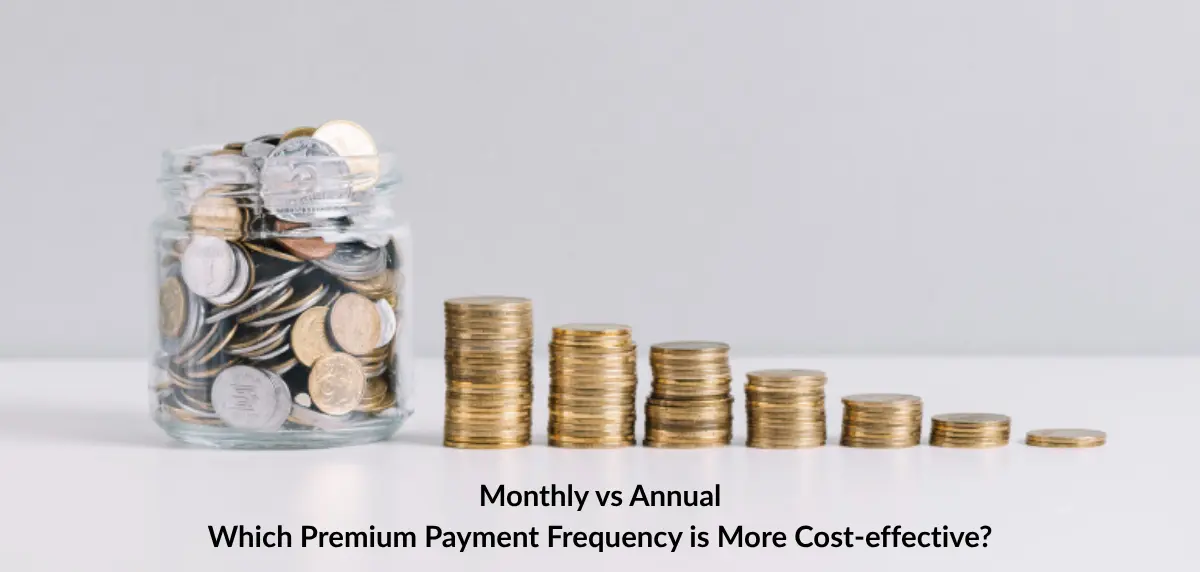When you decide to invest in a life insurance policy, there are several aspects to think about for both protection and smart savings. One of the most crucial elements is the insurance premium you need to pay. Insurance providers offer various options when it comes to the premium payment frequency. Among them, the most discussed choice is the monthly vs. annual premium payment, especially from a cost-efficiency point of view.
Let us explore these two options, understand the difference between monthly and annual premium payment, and figure out which one is appropriate for you.
Understanding Monthly and Annual Premium Payments
Insurers generally allow policyholders to choose from three types of premium payment frequencies: single, limited, and regular. A life insurance savings plan not only offers life cover for the policy term but also assures a guaranteed return at the end.
- In a single premium plan, you make a one-time lump sum payment at the start.
- In a regular or limited premium plan, you pay the life insurance premium either throughout the policy term or for a fixed number of years.
Within the regular option, you can choose to pay premiums monthly, quarterly, half-yearly, or annually. The most common methods are monthly vs annual premium payment.
Here’s a quick comparison.
Factors
| Monthly Premium Payment
| Annual Premium Payment
|
Number of payments per year
| 12
| 1
|
Premium per instalment
| Lower
| Higher
|
Discounts
| Not usually offered
| Often available
|
If you choose to pay monthly, you’ll make 12 smaller payments each year. However, this usually doesn’t qualify for special discounts. On the other hand, paying once a year might seem costlier upfront, but often comes with discounts and fewer processing fees.
Which Option is More Cost-Effective?
To determine which option suits you better, it is important to review your budget, cash flow, and future needs. Here’s how you can evaluate.
Financial Budget
Your income cycle plays a big role. A salaried employee from a middle-class family may find it difficult to pay a large amount in one go due to fixed monthly expenses like groceries, school fees, EMIs, etc. In such cases, monthly payments feel more manageable.
In contrast, self-employed individuals or business owners who receive lump sum income annually or seasonally may find it easier to opt for a one-time yearly premium. It aligns better with their irregular income.
For salaried people, paying a yearly life insurance premium may stretch their budget. And for business owners, paying monthly could become a burden during slow income months.
While annual payments may be cheaper in the long run, they are not always practical for everyone. Therefore, the choice should depend on your comfort with making payments rather than just the cost.
Policy Duration
The length of the policy is another major factor. If you purchase a life insurance policy at a young age and opt for a longer term, the annual premium may be relatively lower, and monthly payments even more affordable.
For example, let’s say you have a home loan for 10 years. Choosing a life insurance plan with similar duration can reduce your family’s financial stress in case of your unexpected death. If you’re newly married or planning children, your financial responsibilities will likely grow, prompting you to extend your insurance term.
In such cases, using a life insurance calculator can help you decide how the cost of a monthly or yearly premium fits into your long-term budget. This helps ensure you stay protected without stretching your finances.
Lifestyle
Your financial behaviour also plays a key role. Some people prefer settling large payments upfront and enjoy peace of mind for the rest of the year. This gives them freedom to plan vacations, invest in hobbies, or focus on other priorities.
Others prefer tracking and managing their budget monthly, as they have recurring commitments spread throughout the year. For them, monthly premiums are easier to handle and can be included in their regular budgeting.
So, while annual payment might seem cheaper due to fewer processing charges and available discounts, it really depends on your spending habits and comfort level.
Even though annual premiums may offer long-term savings, they may not be suitable for everyone. The difference between monthly and annual premium payment is not always about the total cost, but how that cost fits into your lifestyle.
For those who can afford to pay once a year without disrupting other priorities, annual premiums are ideal. However, if monthly budgeting works better for your situation, then paying smaller amounts each month is equally beneficial, especially if the life insurance premium amount is manageable.
Both monthly and annual premium payment options come with their own pros and cons. The best choice depends on your income flow, lifestyle, and future goals. Use a life insurance calculator to evaluate which payment method aligns with your budget. Always assess how each option fits into your overall financial plan and your selected life insurance plans.
Choosing the right premium payment frequency helps you stay protected while managing your savings efficiently. So, take time to review your personal situation and make an informed decision that keeps you and your family secure for the future.






















